Bank Reconciliation: The Foundation Of Bookkeeping

Everything needs to have solid foundations, so you can build further and grow. For bookkeeping and your business financial matters a bank reconciliation is something that can’t be ignored.
What is a bank reconciliation?
A bank reconciliation is an accounting tool used to make sure that all of the items that have been paid in and out of your bank account have been posted to your bookkeeping system and accounts.
What is the purpose of a bank reconciliation?
It is important to complete a bank reconciliation on a regular basis as without it how can you be sure that you have paid all of your suppliers? Or received that big payment from a customer? If you haven’t marked your supplier invoice as paid, you run the risk of paying them twice, or you could chase a customer for payment only to find out they’ve already paid – how embarrassing?
As you can see, it is the foundation of your accounts, it helps you to be certain that all of the cash inflows and outflows are reflected in your accounts. If your bank reconciliations are complete, you know which customers to chase for payment and which suppliers to pay. Without it you cannot be certain.
A bank reconciliation is very important for when you have to prepare your tax return, whether it’s a self-assessment tax return or a corporation tax return. And also, for your annual accounts if you’re a limited company. Regular bank reconciliations help you spot fraudulent transactions quickly and prevent any business losses.
How often should you do your bank reconciliation?
This depends on how many items go in and out of the bank account. It if it 100’s every day, then the suggestion would be to complete it every day. If it is 5-10 transactions, then weekly would be more than enough. If it was fewer than that, you may wish to do it monthly. Just remember the more often you do it the more in control you will be and the easier it will be to complete. Spending 10 minutes a day to reconcile 20 transactions could be a much better use of time than trying to reconcile 400 once a month.
The best accounting software
Want to speed up your bookkeeping? Xero accounting software can help
Get in touch with our Xero accountants from Oxford to talk about the packages.
What are the steps in a bank reconciliation?
- Firstly, you will need a copy of your bank statement, this is the first step, without your bank statement you won’t be able to reconcile your bank account. Our Oxford bookkeepers recommend you get this copy electronically, as the process is more efficient this way.
- The next step is to take a copy of your “cash book”. The cash book is everything you have posted to your bank account on your financial software or in a spreadsheet.
- Once you have both, you need to compare the lists. Everything that is on your bank statement and in your cash book can be disregarded. These items have been posted to your accounts and these entries match the bank statement. It means this part of your bookkeeping is correct. If you’re doing this on a spreadsheet, you can simply colour these cells.
- What we are interested in are the remaining items; items on your bank statement and not in the cash book, so not on your spreadsheet or in your accounting software. And the other way around; items in the cash book and not on your bank statement.
- The first set of items are easy to resolve, you simply post these to your financial statements. These transactions happened, because they’re on your actual bank statement. The second set of items require more investigation, you will need to find out why they are in your bookkeeping system but not on your bank statement. A common reason is that the payment hasn’t cleared yet, for example you made a 3 day payment on the Friday and posted it to your accounts, but you are reconciling the statement up to Tuesday. Another reason could be simply that you duplicated something and it will need removing.
- The final step is to make sure the bank balance on your statement matches the balance on your account. It is okay if there is a difference as long it is for a reason such as the timing as explained above.
How can you do a bank reconciliation 5 times quicker?
Using accounting software is the best way to speed up a bank reconciliation. Your bank statement can be automatically imported to the software via a bank feed saving you the hassle of having to download it and manipulate it in a spreadsheet every time. The software will also learn what you have done with the previous payments or receipts. So, if for example, you have a monthly direct debit to Joanna Bookkeeping for £50, the accounting software will know what to do with this and can either post it automatically or give you a suggestion.
The other way to speed up a bank reconciliation is to pay a professional bookkeeper to reconcile your bank control. This is especially true if you have a high volume of transactions. Bookkeepers will be used to working with large volumes of transactions, they know how to approach things in the most efficient way and they’re familiar with accounting software and how to use it to everyone’s advantage.
Our Oxford bookkeeping team loves technology and always explores new accounting software features to make our bookkeeping services even better for our clients.
If you’re looking for professional bookkeeping support, our Oxford bookkeeping team is here to help.
More Articles
Categories

Your Accountant in Oxford
Oxford Office
Joanna Bookkeeping
The Wheelhouse Angel Court
First Floor, Angel Court
81 St Clements St
Oxford
OX4 1AW
Connect
joanna@joannabookkeeping.co.uk
01865 591952





